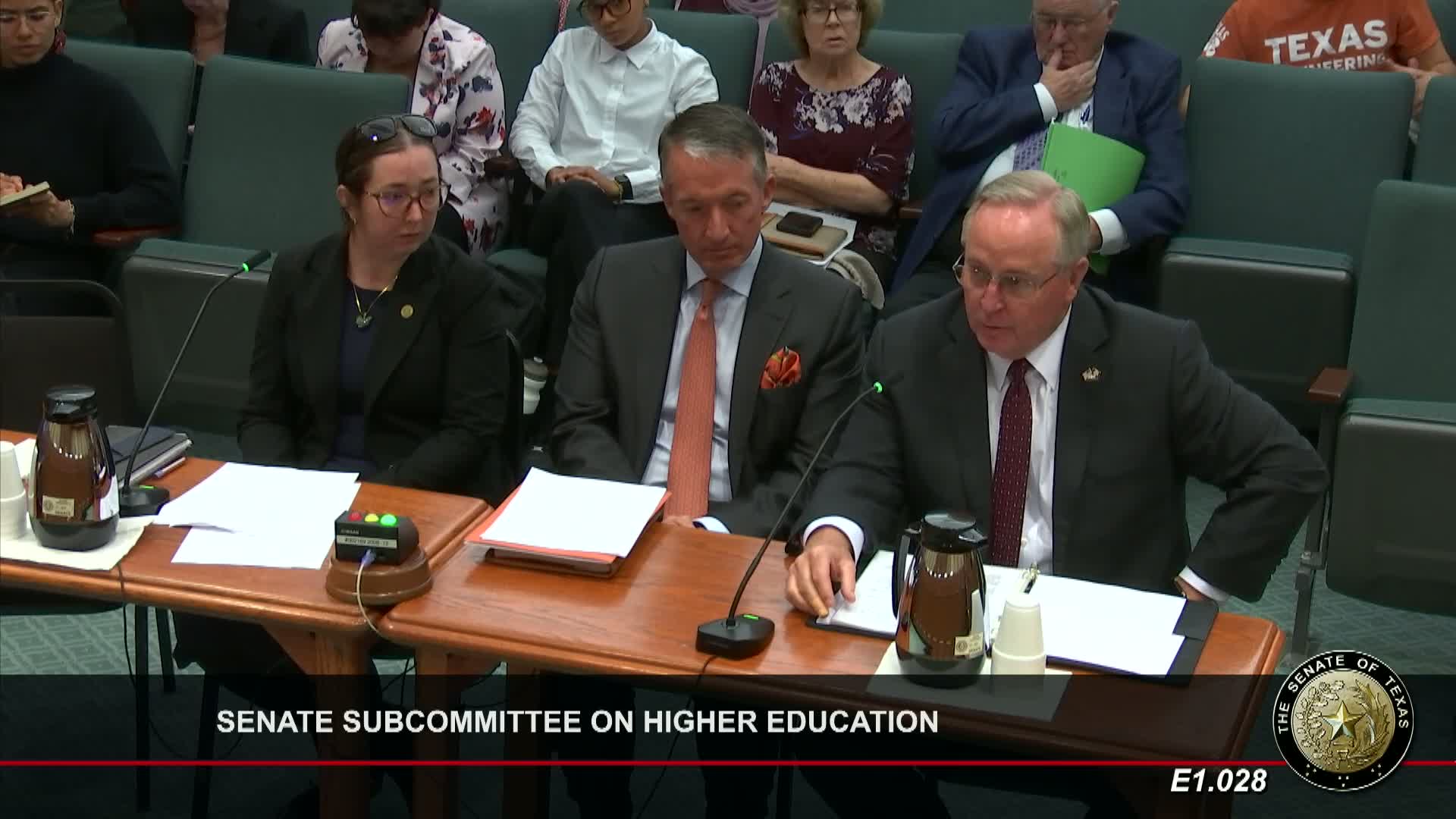University leaders unveil ambitious plans for curriculum reform
November 11, 2024 | Subcommittee on Higher Education, Committee on Education, Senate, Legislative, Texas
This article was created by AI summarizing key points discussed. AI makes mistakes, so for full details and context, please refer to the video of the full meeting. Please report any errors so we can fix them. Report an error »

During a recent government meeting, leaders from Texas universities discussed their curriculum development processes and the importance of adapting education to meet workforce demands. The meeting highlighted the achievements of Texas A&M University, which reported a record number of applicants for the upcoming fall semester, exceeding 90,000. Notably, applications from Black students increased by 20%, while Hispanic and Asian American applications rose by 12% and 19%, respectively.
The president of Texas A&M emphasized the role of faculty in shaping the curriculum. He explained that curriculum proposals must be backed by industry data to ensure they meet workforce needs. The process involves multiple layers of review, including input from faculty, department heads, and external advisory boards. This thorough approach aims to maintain high academic standards and avoid duplication of programs.
At the University of Texas at Austin, President Jay Hartsell outlined a similar curriculum development process. He noted that course offerings are influenced by both supply and demand, with input from faculty and industry partners. The university is currently reviewing its \"flags\" program, which integrates essential skills into the curriculum. This review aims to ensure that the program remains relevant and supports timely graduation.
Both university leaders expressed a commitment to continuous improvement in education. They acknowledged the importance of aligning academic programs with the evolving needs of the workforce. The discussions underscored the universities' dedication to producing graduates who are not only knowledgeable but also equipped with the skills necessary for success in their careers.
The president of Texas A&M emphasized the role of faculty in shaping the curriculum. He explained that curriculum proposals must be backed by industry data to ensure they meet workforce needs. The process involves multiple layers of review, including input from faculty, department heads, and external advisory boards. This thorough approach aims to maintain high academic standards and avoid duplication of programs.
At the University of Texas at Austin, President Jay Hartsell outlined a similar curriculum development process. He noted that course offerings are influenced by both supply and demand, with input from faculty and industry partners. The university is currently reviewing its \"flags\" program, which integrates essential skills into the curriculum. This review aims to ensure that the program remains relevant and supports timely graduation.
Both university leaders expressed a commitment to continuous improvement in education. They acknowledged the importance of aligning academic programs with the evolving needs of the workforce. The discussions underscored the universities' dedication to producing graduates who are not only knowledgeable but also equipped with the skills necessary for success in their careers.
View full meeting
This article is based on a recent meeting—watch the full video and explore the complete transcript for deeper insights into the discussion.
View full meeting
